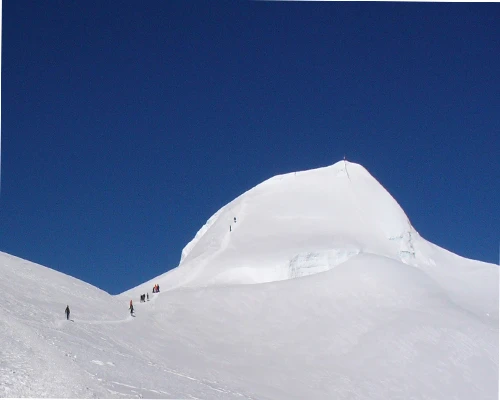Notice for domestic flights to and from Lukla
Note: Because of a heavy traffic jam at the International airport in Kathmandu and the necessity of several domestic flights to Lukla, flight operation was shifted to the nearest airport.
The Tribhuwan International Airport and the domestic Airport are partially the same in Kathmandu. Thus, it used to be heavy air traffic during international flights. The domestic flight schedule will often be interrupted by International flights.
The domestic flight to Lukla mostly departs early in the morning with small aircraft. The legendary Everest trek begins from Lukla, so most trekkers to the Everest region usually fly in and out from Lukla. Often, the higher volume of trekkers want to visit the Everest region. So, there should be several scheduled flights every day. Thus, Nepal Aviation had decided to operate smooth flights from the nearest airport to Kathmandu during the main trekking and peak season. The nearest airport is in the countryside called Manthali Ramechhap, which needs approximately 4 hours of off-road driving.
The flights are effective from the beginning of October to the End of November in autumn and from March to mid-May in spring.
We recommend our clients move a day earlier from Kathmandu to nearby Manthali for the flight to Lukla. That will provide the perfect views of the countryside, also that will not be a rushed and uncomfortable drive.
Most trekkers get driven in the middle of the night from Kathmandu to Manthali for the next day’s morning flight. There would be some discomfort, such as less sleep that night, if you do not arrive on time at the airport, the flight can be missed. You never know what is happening and going on the road in the countryside.
Road & vehicle facilities
The road connection is being extended close to Lukla. It is under construction, so the road is adventurous, bumpy, and Seasonal. The road from Kathmandu to Sallery is at least good for driving and takes about 12 hours, then at least 9 hours more to Surke. We must change the 4x4 vehicle from Salleri to Everest doorways or vice versa, or use local vehicles. If the road is not damaged by rain, flooding, or other issues, then you can easily get in and out of Surke, which is an hour away from Lukla Airport. Otherwise, passengers should walk a bit further away until the Jeep is available. If the flight is cancelled or you have enough time and want to experience the lower Everest region, then overland driving is another exciting option.
The highest altitude
During hiking at Kongde up to 5,000.00 meters. Highest overnight at Kongde 4280 meters
Amazing things to see from the Everest Luxury Trek
The highest mountain in the world, Everest, 8,848 meters, Lhotse, 8,516 metres, Lhotse Shar, 8,383 meters, Makalu, 8,485 meters, Cho Oyu, 8,188 meters. The most beautiful mountain, Amadablam, 6,812 meters, is in Nepal. The famous trekking peak, Island Peak, is 6,100 meters. Buddhist culture and traditions, ancient legendary Trans Himalayan salt way, and incredible Himalayan animals. Off-the-beaten meditative trail, Complete views of Khumbu from Kongde.
Symptoms of Altitude sickness
Altitude sickness (acute mountain sickness) is difficulty sleeping, dizziness, headache, fatigue, loss of appetite, rapid pulse, nausea, vomiting, etc. It affects mountain climbers, hikers, and skiers because of lower air pressure and lower oxygen levels. It occurs as a result of failure to adapt at a higher altitude. It happens most often in the brain or the lungs after the fluid begins to leak from the blood vessels.
When the fluid collects in the brain, you initially get headaches, loss of appetite, nausea, tiredness, a desire to lie down and feel powerless, unwilling physical movement is unwilling, and a decrease in consciousness, and the problem with balance coordination is called high–altitude cerebral edema (HACE). If the fluid is collected in the lungs, you become breathless and dry, and it makes a regular irritative cough, sometimes coughing up blood too, discoloration of the skin, and chest tightness is called high altitude pulmonary edema (HAPE).
Prevention of Altitude Sickness
To prevent acute mountain sickness, we have to follow fundamental gravity habits such as patience, consistency, and discipline in the mountains. The mountains have their own rule and regulations. We cannot turn them into our nature except by following and respecting them. Cloth properly according to the altitude, avoid rapid altitude gain, drink enough water or fluid, take enough acclimatization time to adjust the body at a higher altitude, avoid alcoholic items, control smoking, eat regular meals, and get higher & sleep at lower altitudes. Avoid high altitudes if you have heart and lung disease. If the symptoms occur, then stop climbing mountains and descend to a lower altitude. In case the person is seriously sick, or cannot bring him/her to a lower altitude by walking and carrying, then she/he should be rescued by a quick Helicopter evacuation.
Findings of our previous experience: We have organized this tour for elderly citizens, children, and non-adventure people. Every time and everyone has less chance of altitude sickness in this trek because of good acclimatization and comfortable hiking.
Luxurious accommodation
The accommodation in this trek will be very luxurious in the city and on the Trek. We provide very neat, clean, and comfortable hotels, such as Yeti Home resort, for the entire trek.
Necessary Clothing Items
Lightweight walking boots, a pair of track shoes, and slippers to wear in the evening or when the boots are wet.
Warm jacket (Fibers fill or down should be adequate.)
A Rainproof jacket with a hood or poncho.
Warm clothes or fleece jackets.
Thin and thick trousers.
Warm trousers are useful higher up in the mountains in the morning and at night. (Windproof/ waterproof trousers are necessary during treks going above 3000 m)
Thermal underwear (These are excellent for sleeping at night)
A pair of loose-fitting long shorts and 1 lightweight long-sleeved shirt are particularly suitable for avoiding sunburn.
A woolen or warm hat to wear in the morning and at night. Sunhat and ensure it has a wide brim to cover the face and neck.
A pair of gloves (warm and normal ones)
2 pairs of thin and 2 pairs of thick warm socks.
Underwear, buff, and hankies as you need.
Accessories for Everest Luxury Trek
A duffel bag or a kit bag to carry your gear while trekking, sleeping bag. Small rucksack to carry personal requirements for the day, e.g., toilet paper, towel, soap, etc. Water bottle. Snow glasses and sunglasses, 2-4 large plastic bags to separate clean clothes from dirty ones. Headlamp with spare batteries, sun cream, personal medicine, lip guard, toothbrush, towel, Reading materials, game items (optional), notebook, rubber band, pen and pencil, a diary, a pocket knife, trekking map, passport, and copies.
Drinking Water at Everest Luxury Trek
Travelers should be very aware of drinking water in Nepal. They are not completely adapted to digest direct normal spring water due to the bacteria. So, we recommend you drink mineral water or boiled water. Also, you can use some purifier tablets, such as chlorine tablets, for purifying water on the trek. We strongly recommend mineral water in the city area and purified or boiled water for trekking.



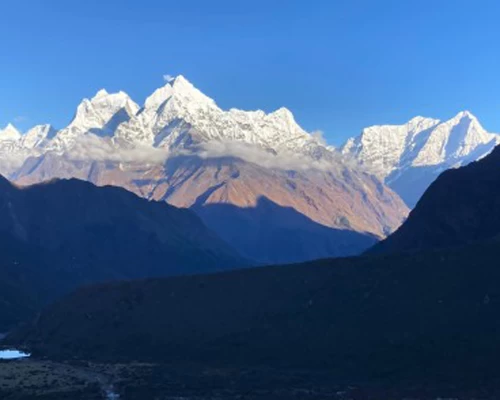

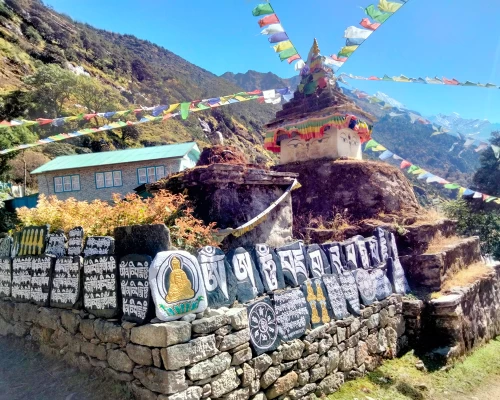
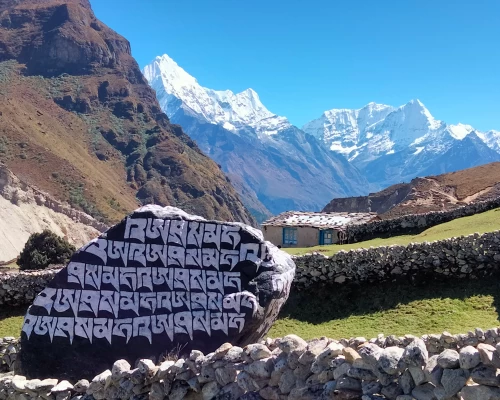
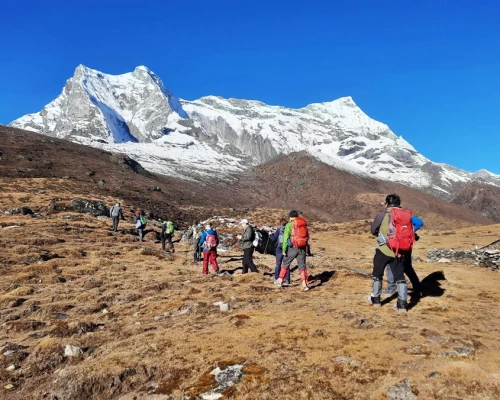

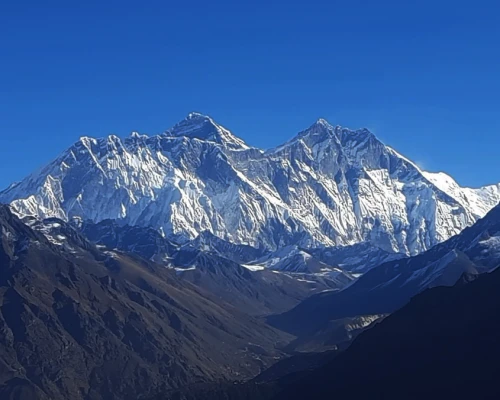
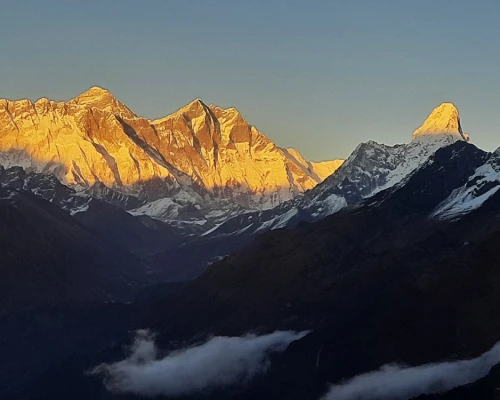




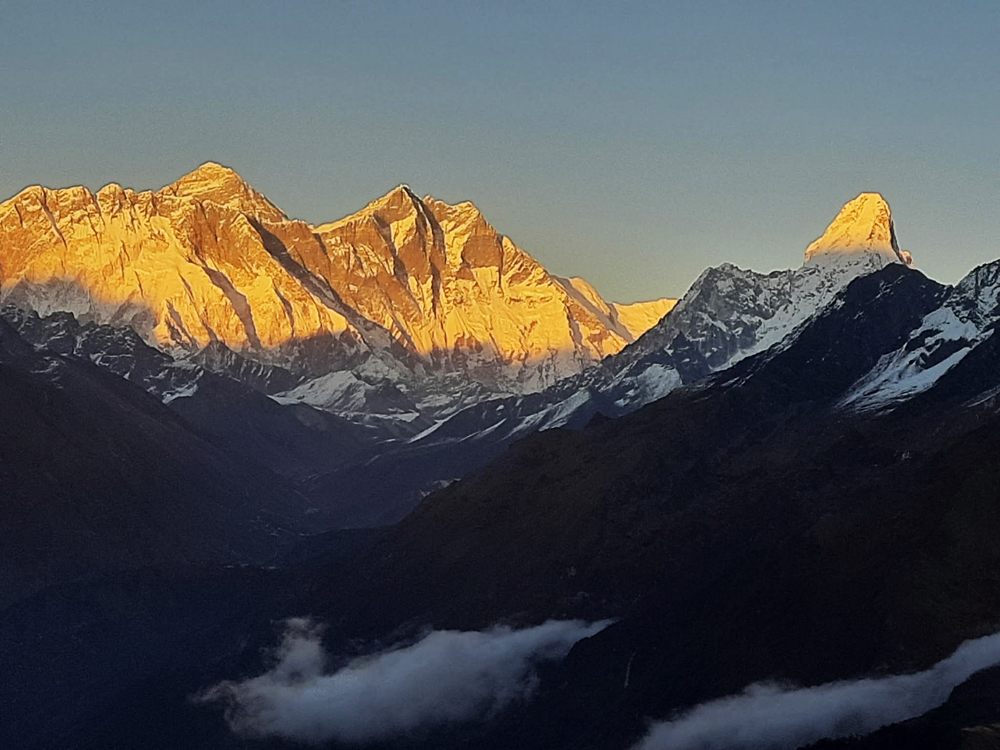

 Phakding to Lukla takes about 3 hours of walking via Thado koshi, Chhoplung, and Chaurikharka village. You will arrive by lunchtime and be free at noon. And farewell dinner together with your crews, need to thank trekking crews with some TIPS or a present, because this is the last dinner together. Without them, this fantastic trip would be impossible.
Phakding to Lukla takes about 3 hours of walking via Thado koshi, Chhoplung, and Chaurikharka village. You will arrive by lunchtime and be free at noon. And farewell dinner together with your crews, need to thank trekking crews with some TIPS or a present, because this is the last dinner together. Without them, this fantastic trip would be impossible.

